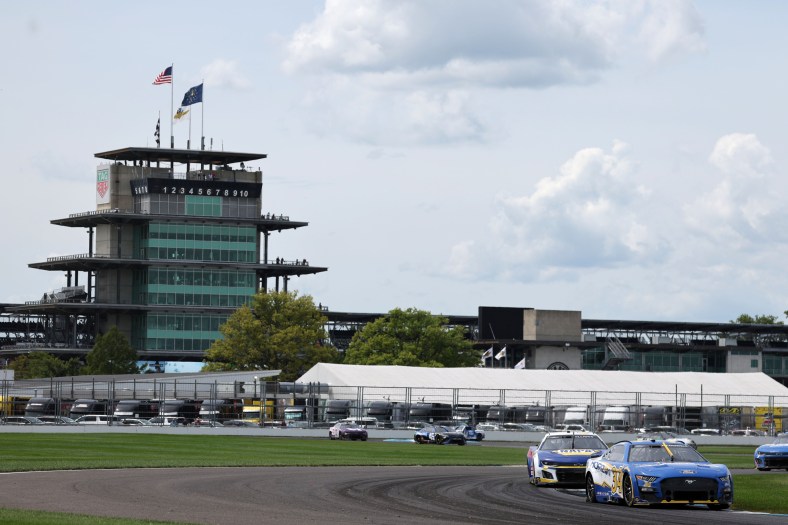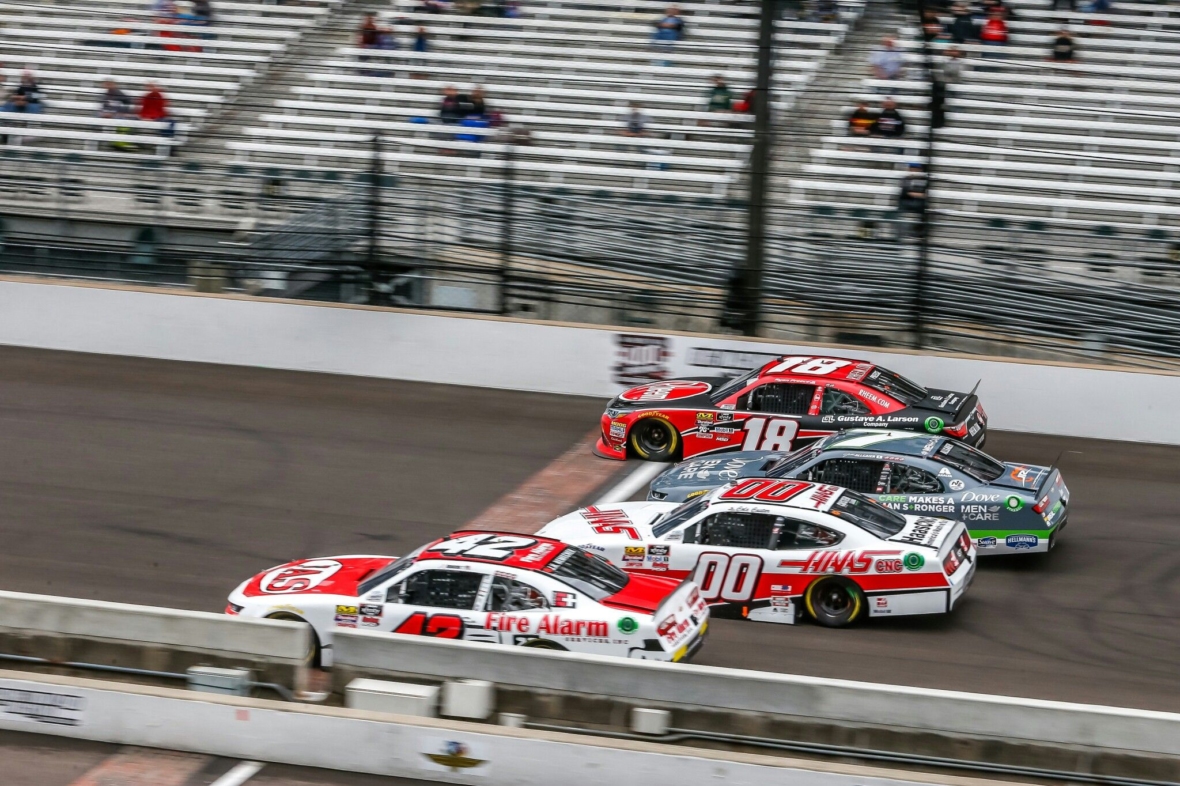
INDIANAPOLIS — The Indianapolis Motor Speedway is one of the most magical places in the world, but the Racing Capital of the World felt devoid of such magic on Sunday.
It was a perfectly fine race, even if winner Michael McDowell felt compelled to apologize for stinking up the show, speaking more to fans’ unrealistic expectations than the actual quality of competition. There were strategic deviations, and at one point, McDowell, Chase Elliott and Daniel Suárez all ran nose-to-tail each needing a win to make to the NASCAR Cup Series playoffs.
That’s palpable drama, even if there is a subset of the fan base that simply enjoy carnage and chaos.
With that said, something is missing from the weekend, and it’s probably not as simple as just throwing the Brickyard 400 on the oval as a long-term solution. Meta: I haven’t been to the Brickyard weekend since before the pandemic and was struck on Sunday by how muted everything was.
Again, that’s not a slight at IMS, one of the absolute nicest places to watch a race from either side of the fence but something is plainly missing.
Recognizing that, NASCAR and Indianapolis Motor Speedway officials seem poised to move the race back to the super oval next year to celebrate the 30th anniversary of the inaugural Brickyard 400 in 1994. There is a test scheduled on Monday and Tuesday with Chase Briscoe, Ty Gibbs and Alex Bowman putting several tire compounds and aerodynamic configurations through its paces.
As track president Doug Boles told Sportsnaut on Sunday, this is the next step towards determining if the second year NextGen car would be a good fit for the oval while also avoiding what happened the last time NASCAR placed an undertested car on the oval, contributing to the Tiregate disaster of 2008.
Surely there would be a short-term nostalgia attendance boost the first-time NASCAR returns to the oval after a three-year hiatus, but there is a reason that decision was made in the first place. While racing purists and diehards (I’m one of them) enjoyed the last couple of years on the oval, it didn’t produce the carnage and chaos that folks are once again seemingly yearning for after a classic-style road course affair on Sunday.
All of this is to say that the Brickyard 400 is going to need something else to remain viable over the next several years and simply switching back and forth from the oval to road course probably isn’t the solution either.
Here’s the hard, unfortunate truth: NASCAR racing at the Indianapolis Motor Speedway doesn’t capture hearts and minds anymore. From 1994 to 2007, it was a novelty play built upon seeing Stock Cars on the same circuit as the Indianapolis 500.
Tiregate began a decade of death by a thousand cuts that eventually saw the race moved to the road course where it could share a weekend with the IndyCar Series. There is almost just as much time where NASCAR at IMS feels inconsequential as the first 13 years where it felt like the second biggest race of the year.
The Indianapolis 500 itself began to experience a noticeable downturn in attendance until a series of great races surrounding the centennial, combined with a sold out 100th running in 2016, injected a new sense of awe into the Greatest Spectacle in Racing.
Beyond nostalgia, the Brickyard 400 has no such magic potion.

One such concept, as much as purists and drivers may be loathe to accept it, could be a rules package conceptual in nature to the one the Xfinity Series used on the IMS oval back in 2017 — one that featured a superspeedway restrictor plate, aero ducts and a larger spoiler/splitter combination.
That package produced a four-wide finish for the first stage and a thrilling finish that saw William Byron hold off 2011 Brickyard 400 winner Paul Menard. If the Brickyard 400, beyond nostalgia, lacks nostalgia, maybe NASCAR’s penchant for low horsepower, high drag racing could give this race one last chance for staying power.
The push back was best articulated by Tyler Reddick when Sportsnaut asked about it last week at Michigan.
“I don’t want it to be a gimmick race where it’s so easy to pass that no one wants the lead but you also don’t want a race where it’s extremely difficult to pass and you could drop anyone out front with clean air and you can’t even get to within two car lengths of the leading car,” Reddick said.
That’s the Indianapolis Motor Speedway oval and there’s probably not much of a middle ground, although the industry is hoping the new car might produce better returns than its predecessor.
Ultimately, it’s hard to see NASCAR abandoning the Speedway given what it meant for Stock Car rising to mainstream prominence in the 90s; the symbolic overtaking of Indy car racing as America’s motorsport of choice.
But right now, there is no identity, no buzz and no signature racing product that couldn’t be replicated in front of so many more people at a place like Road America, which packed out Elkhart Lake Wisconsin for two years before having its date move to the Streets of Chicago.
It’s such an unlikely pipe dream, but if racing within the Indianapolis market still means that much, there is always Indianapolis Raceway Park, which is undergoing a series of renovations with its NHRA-led staff aiming to have an expanded NASCAR presence on their schedule.
Full circle, the Indianapolis Motor Speedway should mean so much more but NASCAR’s race on Sunday just felt inconsequential.
Matt Weaver is a Motorsports Insider for Sportsnaut. Follow him on Twitter.